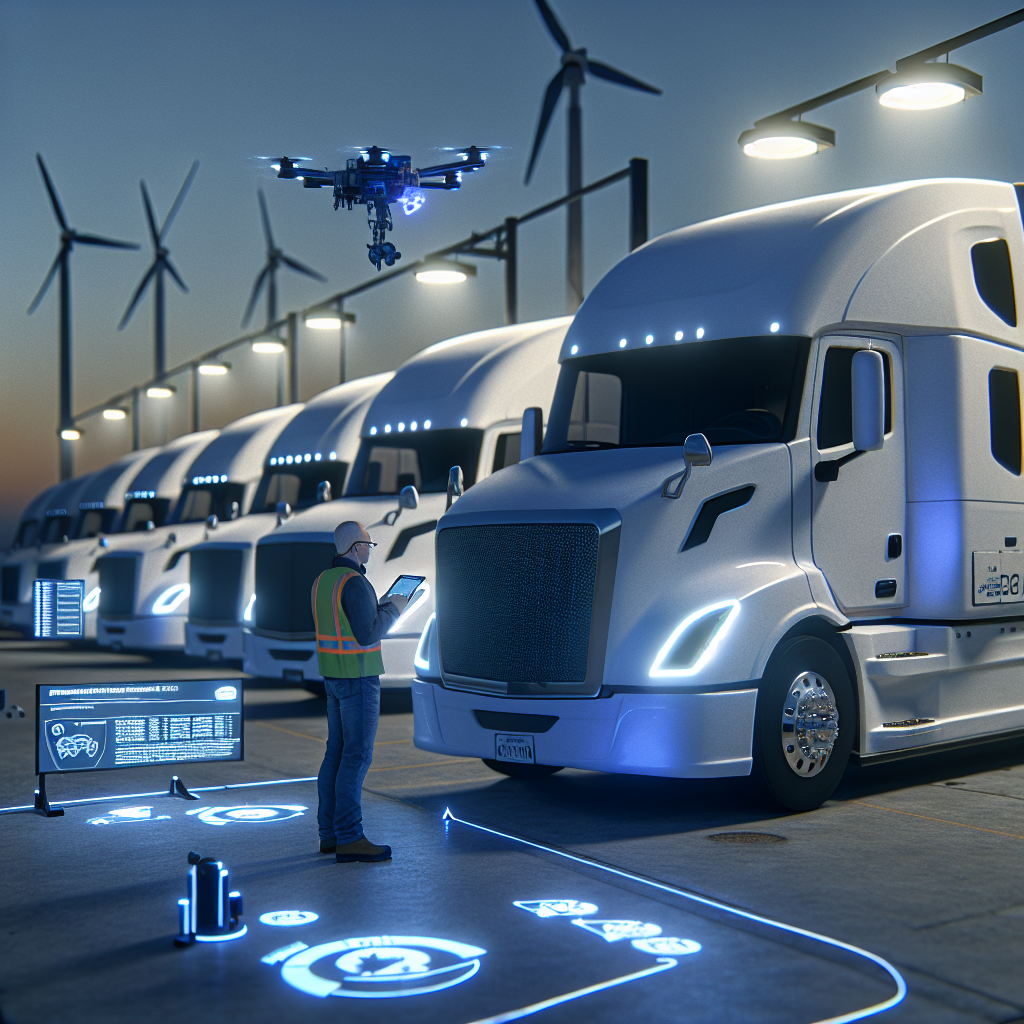In trucking’s “messy middle,” where diesel realities meet net‑zero promises, fleets are turning to artificial intelligence to make practical progress. A recent FreightWaves conversation with EROAD leaders underscored how digital twins, AI safety systems and data sharing are becoming the connective tissue between sustainability targets and day‑to‑day operations. Rather than chasing shiny objects, carriers are using models that ingest real routing, weather and charging data to test what’s feasible before they spend a dollar — and to prove the return on emissions and cost.
That planning mindset is being reinforced by the market. With weak demand, stubborn costs and consolidation top of mind, executives say the next 12–18 months will demand ruthless prioritization. The implication: greenlight only those tech projects that hit both the P&L and the emissions ledger. AI clears that bar most often when it eliminates empty miles, squeezes dwell, or cuts claims — benefits that show up quickly.
The test‑before‑you‑buy approach is spreading from the back office to the roadside. Arkansas is investing $2.7 million to deploy AI‑enabled commercial vehicle “mainline sorter” systems on I‑40 (Lehi) and I‑55 (Marion) — two of the state’s busiest freight gateways. The integrated suite will combine weigh‑in‑motion, tire anomaly detection, automated credential checks and dynamic messaging to pre‑screen trucks at highway speeds. For carriers, that promises fewer time‑killing pulls and more predictable transit — a quiet but meaningful sustainability lever when idling and detours are trimmed at scale.
At the vehicle level, AI is also changing the safety conversation. Multi‑camera vision systems that detect risks, coach drivers in cab and automatically upload relevant clips are now exonerating drivers in most reviewed incidents — building a data trail that protects professionals while lowering nuclear verdict risk. It’s a reminder that the fastest sustainability wins often ride shotgun with safety and productivity improvements.
Policy turbulence is shaping the adoption curve. Since October 10, a string of EV policy moves and political rhetoric has cast a shadow over parts of the battery build‑out, particularly in the South. That uncertainty doesn’t halt decarbonization so much as it redirects it: fleets are leaning harder into efficiency tech and exploring alternatives that fit long‑haul duty cycles, such as hydrogen for high‑utilization corridors, while they continue to sweat diesel assets.
On that front, Hyundai Motor and PlusAI’s autonomous, hydrogen fuel‑cell Class 8 platform earned fresh recognition on October 13, highlighting a pathway where zero‑tailpipe trucks and hub‑to‑hub automation reinforce each other: long range and fast refueling meet 24/7 asset utilization. Early deployments in California drayage and at Hyundai’s Georgia logistics operation are seeding corridors that other heavy vehicles can follow. For U.S. fleets, the signal is clear — plan now for duty cycles where hydrogen pencils, even if diesel still dominates elsewhere.
None of this works without trust in the data. The number of active ransomware groups has surged, and U.S. firms remain the prime targets. As fleets knit together telematics, TMS, temperature monitoring and emissions reporting, the attack surface grows. Cyber hygiene is becoming a core operational requirement for AI programs, not a nice‑to‑have; that means patch discipline, segmented networks, and clear incident playbooks tied to transportation operations.
What it means for carriers today: first, use digital twins to answer the board’s two questions — what’s the real total cost of ownership and where does it work first? Second, capture quick wins from AI that reduce waste you can measure (backhauls, detention, claims). Third, watch the infrastructure breadcrumbs — weigh‑station modernization and corridor pilots often foreshadow where compliance and fueling advantages will accumulate. Finally, treat security as the foundation that keeps your AI and sustainability gains from being derailed.
Sources: FreightWaves, Reuters, Hyundai ECV Newsroom, CDLLife, Trucking Dive, ITPro
This article was prepared exclusively for TruckStopInsider.com. Republishing is permitted only with proper credit and a link back to the original source.





